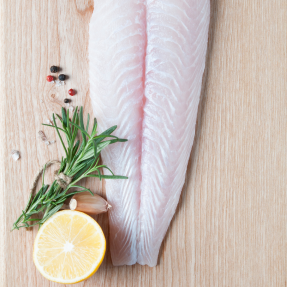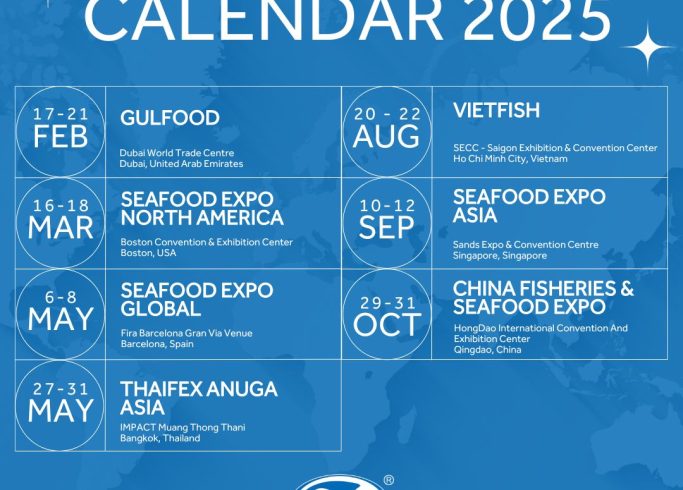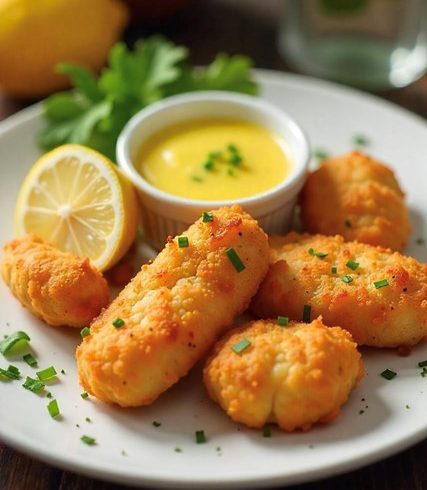[Company news] Vinh Hoan topped the pangasius industry in 2017
15 January 2018
On Jan 14, a ceremony has been held by VASEP to mark the accomplishment of USD 8 billion target for the whole Vietnam seafood industry
In 2017, Vietnam seafood exports reached USD 8.3bn, up 18% yoy. Despite facing many difficulties and barriers such as high anti-dumping tax applied to shrimp, pangasius exporters, initiation of catfish inspection programme, European Commission’s yellow card on illegal unreported and unregulated (IUU) fishing, strengthened quarantine rendered at exporting markets, smear media covering pangasius and competitive pressure from rival countries, etc,..the exports result still reached far beyond expectation thanks to the flexibility, activeness of the seafood corporate community in adjusting their product and market mix.
Attending the ceremony were Minister of Agriculture and Rural Development Nguyen Xuan Cuong, Vice Minister Vu Van Tam and leaders of departments and agencies under the Ministry and the General Department of Fisheries, representatives of the Ministry of Industry and Trade, seafood companies and the press.
At the ceremony, the Minister praised and appreciated the efforts of the seafood community and fishermen community. At the same time, he hoped that the seafood sector will exceed the target of USD 8.5 billion in 2018 and continue to strive to reach the target of USD 10 billion by 2020.
At the ceremony, VASEP honored and awarded cups to top 10 shrimp exporters, top 10 pangasius exporters and top 10 seafood companies in 2017. This year, Vinh Hoan still remained its leading position in pangasius industry with export value recorded at approximately USD250m.
In 2018, there are numerous external factors that may reflect negatively on aquaculture exports such as the US catfish inspection program, the anti-dumping duty, and the IUU yellow card, as well as internal factors such as shortage of raw materials, overuse of antibiotics, increasing production costs, etc.. which have not been fully addressed. These factors, if not solved, may nullify positive efforts resulted from the implementation of bilateral and multilateral trade agreements, building positive product reputation, trade promotion, developing value-added products, improving business environment, etc..
According to the cyclicality of seafood supply and demand, plus the plan to increase production and exports of shrimp towards the goal of USD10bn in 2025, the volume is expected to increase, the competition with other exporting countries (such as India, Thailand, Indonesia, Ecuador ….) will be tougher and export price will decrease slightly compared to 2017, export turnover in 2018 is forecast to increase slightly by 4%, reaching approximately USD 8.5-8.6bn.
![[Company news] Vinh Hoan topped the pangasius industry in 2017 1 Image may contain: 1 person, screen and indoor](https://scontent.fsgn2-1.fna.fbcdn.net/v/t1.0-9/26805117_2088998747784402_7507054335493439451_n.jpg?oh=6c447f028d0f3369f71ba6e072d6aa71&oe=5AF4BBA2)
Photo Credit: VASEP
![[Company news] Vinh Hoan topped the pangasius industry in 2017 2 chi Tam nhan cup tai le mung TSVN dat 8 ty](https://www.vinhhoan.com/wp-content/uploads/2018/01/chi-Tam-nhan-cup-tai-le-mung-TSVN-dat-8-ty.jpg)














